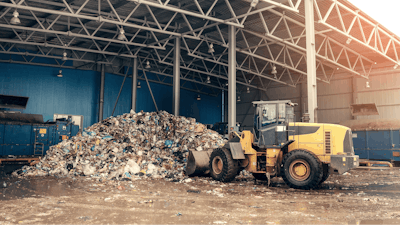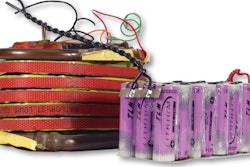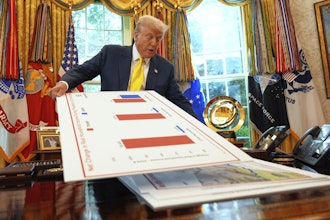
Manufacturing waste refers to any resource, raw material or service not efficiently utilized in production. The result of this inefficiency is that these resources are left at the end in the form of waste.
Why reduce it?
It is necessary to reduce manufacturing waste as much as possible. The first reason is economic, as reducing waste manufacturing will help reduce the monetary burden on the company. The second reason is environmental sustainability—all the resources taken from the environment put a strain on it. The result of this strain is the deterioration of the environment. Hence, efficient resource utilization can help save our natural ecosystem. It will also help reduce waste.
What are the types of manufacturing waste?
There are seven types of manufacturing waste in the industry. The details of all these seven types are as follows:
Overproduction
It refers to producing more than what is needed at any particular time. The result is that the excessive output must be stored somewhere. The storage requires maintenance that costs additional money and resources.
When products are being over-produced excessively, the result is that previous products may have to be dumped, which may profoundly impact the environment.
Moreover, when excessive products are manufactured, they also use more raw materials that may cost extra for the manufacturers.
Many industries required to produce materials in excess quantity may have to face the problem of overproduction. Companies that produce custom boxes at wholesale, chemical manufacturing companies, etc., must balance customer demand and production to save resources.
Waiting
If a manufacturing process involves several machines, synchronization is the prime goal. The various machines have to be synchronized so that the employees do not have to wait between the completion of one step and the start of the other.
This may happen due to a lack of management when the machine operators cannot match the production time of various machines. Sometimes, this also happens because machines are slow. Lack of necessary workforce also causes unusual delays.
Examples of waiting may be employees sitting idly because of a delayed process. Moreover, unusual downtime of a machine also counts as waiting as no further activity may be done.
Transport
Transport is also an undue manufacturing waste. It can be of an employee, the machine or even the product. The transport of any of these things does not influence the end quality of the product. Hence, efficient plans need to be made to reduce the transport of all these three things.
The employees should not have to move unnecessarily from one place to another as it may reduce their energy that could be utilized to improve the work. Transport of product may cause wear and tear in it. Moreover, it will also involve extra charges on the vehicle being used.
Over-processing
Over-processing refers to adding any unnecessary details to the products. These are the details whose absence will also not change the product. Such details are a mere waste of resources.
This will harm the environment, waste raw materials and waste time for the firm.
Moreover, it can also refer to some extra steps that could easily have been avoided during the production process.
Inventory
Having excessive raw materials than needed is also a huge waste that can put an undue economic burden on the company.
This will involve extra costs for the transport of this inventory. Moreover, the company will also have to bear the expenses of its storage and maintenance. They will have to provide a constant supply of either light, heat or any other resource.
Motion
It refers to any unnecessary and undue motion that could be avoided. This is a waste of energy that could have been utilized for some more productive tasks.
This happens because of the poor organization of the workplace and an inefficient team.
Defects
An end product that does not fit according to the designed or expected model is a defect. It may need reworking or improvement. This improvement will cost the organization extra money that will be considered waste.
It may happen because of failure to follow the plan provided, the carelessness of the employees or any other environmental impact. This reworking will again result in the production of waste that will influence the environment.
How to manage the manufacturing waste?
Although minimizing manufacturing waste to zero is impossible, some waste will always be there. However, with efficient management, this waste may be reduced.
The following are some of the ways that may help you reduce manufacturing waste:
Increase your workforce
Your manufacturing plant may need more people than you have employed. Hence, you may hire more workforce to manage the workflow better.
Efficient planning
You may give a complete plan to your employees about the various steps they must follow during manufacturing. You may divide the tasks for a whole week.
To better manage your floor, plan to manage the employees and the machines being used. Try to synchronize their timings to reduce time waste.
Keeping a check
More than merely assigning tasks is required. Keeping a check on these tasks is also necessary to improve the team's efficiency. You may ask the employees to report their daily activities. Moreover, you may also check every piece of equipment and raw material used.
Improve machine
A piece of machinery that must be repaired repeatedly is also a huge nuisance for the workers. Hence, you may improve the machinery to reduce the time wasted repeatedly repairing the machines. Moreover, since you can never reduce the waste to zero percent, you may get various types of industrial trash compactors at your company. These will help you utilize the waste produced and recycle them. This recycled material may then be used in some other way.
Conclusion
Reduction of waste is the need of the hour these days. It will allow a company to productively employ its resources and increase its profits in the market. All these wastes may be of various types, like chemical, toxic or solid waste. A workable disposal plan for these wastes can also help reduce them.























